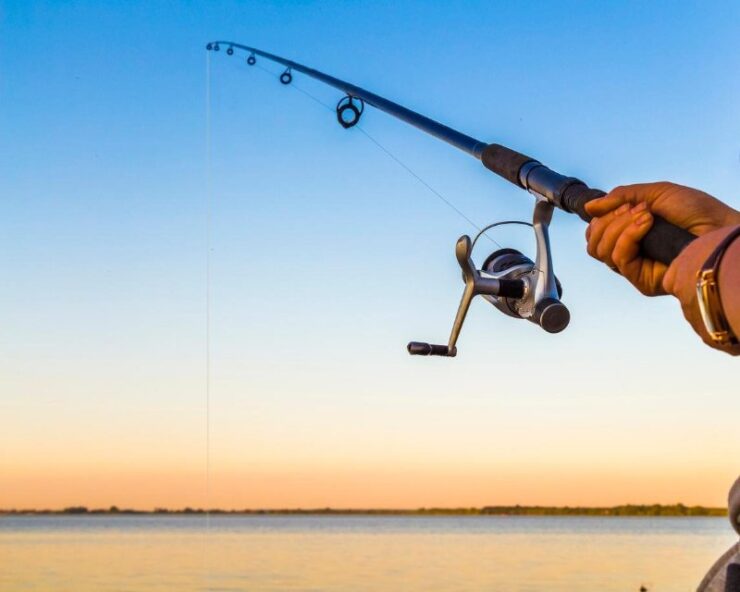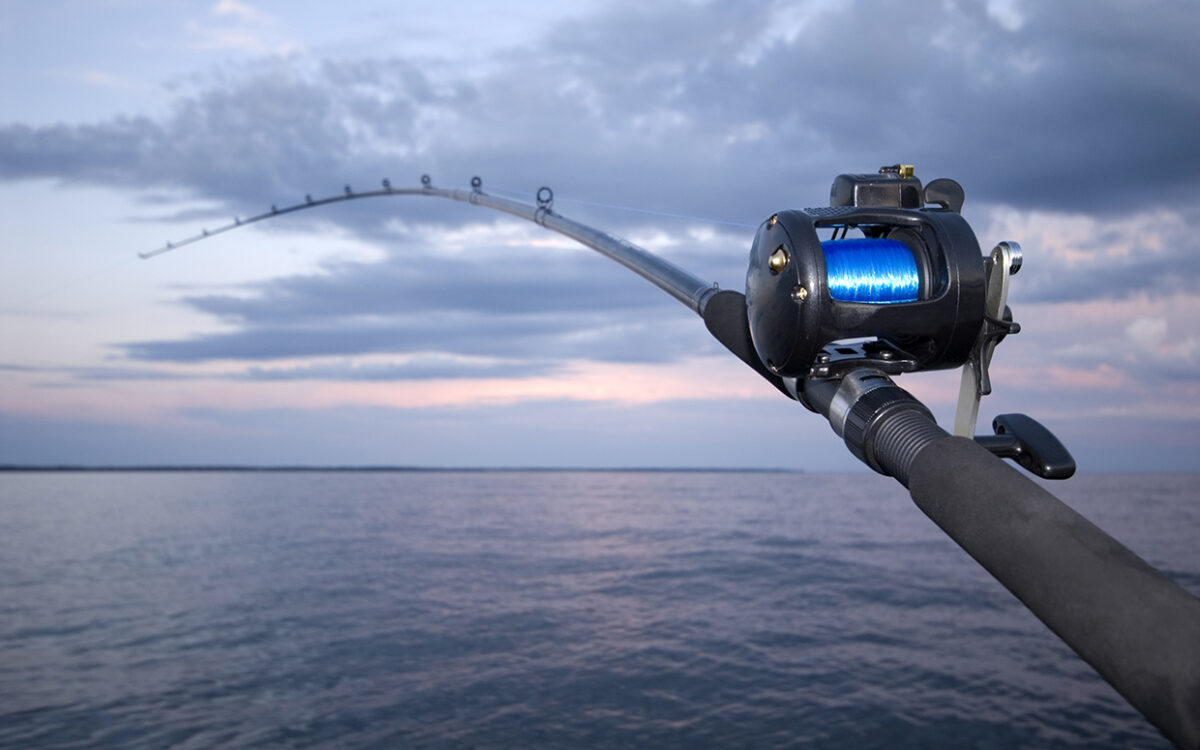If you are planning to go out for a fishing trip with your family or friends, and you are not well experienced about the setting of a fishing rod. Then your fishing trip can be complex, and you may be in need to gets some help. So, before you leave on the water, here are some steps that will really help you to understand How to Set Up a Fishing Rod? These steps also reduce your feelings of embarrassment in front of other fishermen.

How to Set Up a Fishing Rod?
This information makes you feel confident and getting you ready to go out and catching the fish. Here is the step by step guide for you about the fishing rod settings.
Step: 1 Assemble The Rod and Reel.
-
Identify The Parts of a Fishing Rod.
Before assembling the fishing rod, it’s necessary to identify and learn about all the fishing rod’s parts because it is a very complex part. If your fishing rod broke into two parts, the rod fit together through the joints called a ferrule. The male ferrule place on a female ferrule.
-
The handle is present, where the rod held, and the thick part of the rod, called a butt, is closest to the handle.
-
Rings or guides that come all way with the rod to guide the fishing line.
-
Clean The Fishing Rod.
It’s necessary to clean the fishing rod for set up by using the piece of cloth to remove any dust. If necessary, then clean the female ferrule with a cotton swab. If you keep your rod clean, then you will extend its life. Otherwise, the parts that hold it together will destroy or damage with the dirt.
-
Bring The Pieces Together.
Aligning the male and female parts on a flat surface. Hold securely the female ferrule, and tie up the male ferrule all over it. By doing this step, always make sure that the female ferrule is securely and properly aligned.
-
If the rod is not aligned together, then stop this process and read the instruction.
Most rods require to turn round the pieces together. This will have done by holding the female ferrule and turning the male ferrule even they are connected. -
Attach The Reel.
At the bottom of the rod, insert the reel in the female opening called a reel seat. After inserting the reel, place the reel seat over the end of the rod butt. Keep rotating it unless all pieces feel secure.
-
Always threading the right reel tightly and loose the left reel. And remembered that clockwise rotation tightens the thread and anti-clockwise loosen the thread.
Step: 2 Threading Your Fishing Rod.
-
Lift The Arm Bale and Drag the Thread.
The overhead piece in silver color on the reel call bale arm. Just applying the slight pressure, you will easily turn over it up to the other rod side. After doing this, you will easily drag the thread edge, and the reel will un-knot it.
-
Make sure that the line spool untwists in the same direction while the reel rotates. If they do not act in the same direction, then you just need to turn over the spool to match the direction.
-
Threading The Line.
It’s time to threading the line of a fishing rod with the help of a guide, and each rod mostly has four to five eyelets or guides that attached the rod. Starting by the guide that is closing to the reel and move the thread with the line from the bottom to the top.
-
Close The Bale Arm.
To close the bale arm, simply turn over it to the opposite direction as you moved it previously. To make sure that it closed, pull the line gently. No line will be come out.
Step: 3 Choosing The Lure.
-
Pick The Right Color of the Lure According to Weather.
Now, it’s time to choose the color of the lure based on the weather like its sunny or cloudy weather. On sunny summer days, you may like to pick up a silver lure because it helps to reflect the light and attract attention.
And on cloudy winter weather, you will desire to choose a gold lure that has highly reflective properties and helps you to give off light on some stormy days.
-
Choose A Lure Type.
When you choose a lure for fishing rod must keep in mind that what kind of a fish you will aim or going to catch and in which place. If you are aiming to catch a fish in clean and fresh water, then a jig is preferable because it will well perform in fresh water by using its feathers. You can also try a spoon lure for fresh water.
-
But if you want a lure for all purposes, then you can choose a spinner lure because it contains a metal piece. It will also spin in the water while it moves. It can be used for all kinds of purposes and attracts attention.
-
Look at Water Clarity.
The water clarity is very important to consider when you choose lure. If you go fishing in a place that contains muddy and dirty water, then the spinner or a spoon is preferable. Because these lures create the vibration that attracts the fish, even they can’t see the lure.
-
And if you go fishing in a place that contains clean water, then the vibration may frighten the fish.
Step: 4 Attaching The Lure.
-
Thread The Line Through a Lure.
After choosing a lure, now threading the lure on the line and approximately leave 10 inches or 20 centimeters of the line on the other lure side.
-
Gale The Line Back About Itself.
When the line and lure on the ground, place the free end line towards the remainder of the line. Loosely wrap the other side of the lure with the end of the line, and after wounding the line 5 times together, stop it.
-
Fold The Free End of the Line.
Pull the end of the line towards the lure and bend it through the big first loop. After the bending, once more fold it within itself to get it underneath the line.
-
Fasten The Knot.
Hold both sides of the line and slowly pull them together. It will make the coil of the line tight where it was wrapped and build a string knot at that lure. You need to assist this process by using your nails to twist the curves against the lure. When the knot is firmly wrapped, clip the excess at the end.
Now you are ready to smartly set up your fishing rod but always select the lure according to your type of fish what you are going to catch. And choose the length and size of your rod appropriately according to the size and type of your fish.

